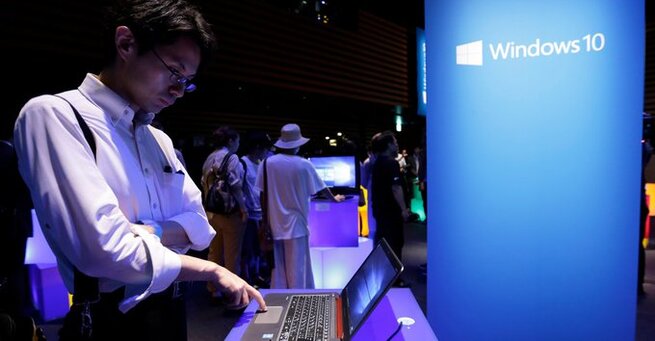Alerts

Windows 10 still holds a powerful grip on PC users worldwide, even as Microsoft bids farewell to Windows 10 today. Nearly a decade after its release, the operating system remains one of Microsoft’s most beloved products — and millions of users aren’t ready to move on.
Launched on July 29, 2015, Windows 10 quickly became a favorite for both home users and businesses. Its stability, user-friendly design, and compatibility made it a go-to platform for productivity and gaming alike. Despite the launch of Windows 11, Windows 10 continued to dominate usage charts until just a few months ago.
According to StatCounter, around 40% of all Windows devices still run Windows 10 — a number that speaks volumes about its enduring popularity. That’s why the end of official support feels bittersweet for millions of people who depend on it daily.
As Microsoft bids farewell to Windows 10, the company will officially stop offering software updates, technical assistance, and security fixes. This marks a major transition point for both users and businesses who have stuck with the platform for its reliability and simplicity.
However, there’s a twist. Microsoft is allowing consumers to extend their Windows 10 experience through free extended security updates for one additional year. Previously, this option was only available to enterprise users. This move signals how deeply entrenched Windows 10 remains among everyday consumers.
The reluctance to upgrade to Windows 11 largely stems from its strict system requirements and the unfamiliar design changes. Many older PCs simply can’t run the new OS without hardware upgrades. Others prefer Windows 10’s classic layout, stability, and performance.
Microsoft’s strategy to nudge users toward Windows 11 through AI-driven features and design overhauls hasn’t completely succeeded. For countless users, Windows 10 represents a sweet spot between functionality and familiarity.
Even as Microsoft bids farewell to Windows 10, the company is doubling down on AI integration across its software ecosystem. Windows 11 and the upcoming Windows 12 are being built with Copilot AI at their core — reshaping how users interact with their PCs.
This shift toward AI-powered experiences highlights Microsoft’s commitment to innovation but also underscores a growing divide: users who crave cutting-edge tools versus those who simply want a stable, efficient system that just works.
For users unable to upgrade, the free extended security updates are a temporary lifeline. Businesses and individuals can keep their systems safe for another year while planning future transitions. But once that grace period ends, those still on Windows 10 will face increasing cybersecurity risks.
Experts recommend considering hardware upgrades or migrating to Windows 11 before the extended support expires. Still, given how loyal many users are, it’s likely that Windows 10 will remain active well beyond Microsoft’s official cutoff.
Saying goodbye to Windows 10 isn’t just a technical change — it’s emotional for many who’ve spent nearly a decade using it. From students and gamers to professionals and developers, countless users have built workflows, habits, and memories around this OS.
Even though Microsoft is moving forward, users’ resistance to upgrade proves that Windows 10 achieved something rare in tech: it earned genuine trust and affection.
With Windows 12 rumors growing and Microsoft’s focus shifting to cloud and AI platforms, the company’s future clearly lies beyond Windows 10. Yet, as Microsoft bids farewell to Windows 10, millions of loyal users are reminding the tech giant that innovation should never come at the cost of comfort and reliability.
Windows 10 may be officially reaching its end, but for many, it’s still the operating system that just feels like home.
𝗦𝗲𝗺𝗮𝘀𝗼𝗰𝗶𝗮𝗹 𝗶𝘀 𝘄𝗵𝗲𝗿𝗲 𝗿𝗲𝗮𝗹 𝗽𝗲𝗼𝗽𝗹𝗲 𝗰𝗼𝗻𝗻𝗲𝗰𝘁, 𝗴𝗿𝗼𝘄, 𝗮𝗻𝗱 𝗯𝗲𝗹𝗼𝗻𝗴. We’re more than just a social platform — from jobs and blogs to events and daily chats, we bring people and ideas together in one simple, meaningful space.